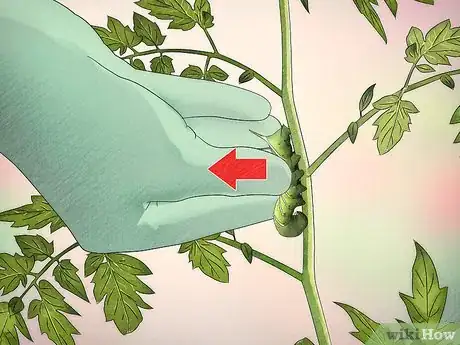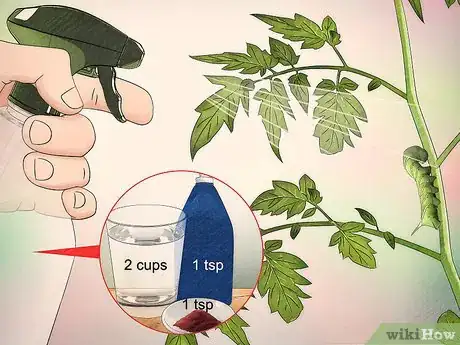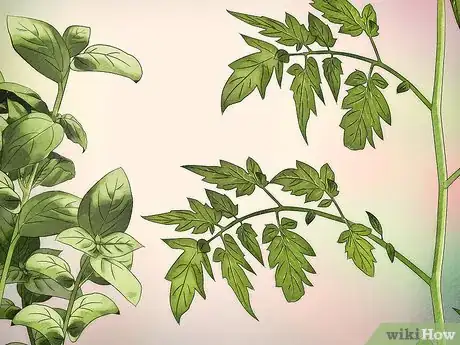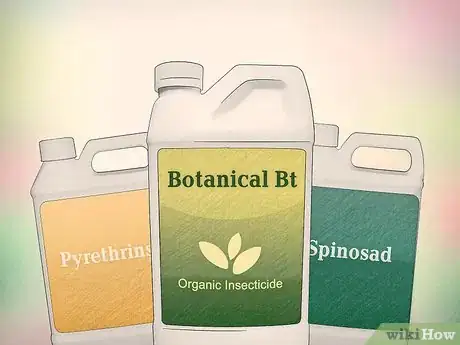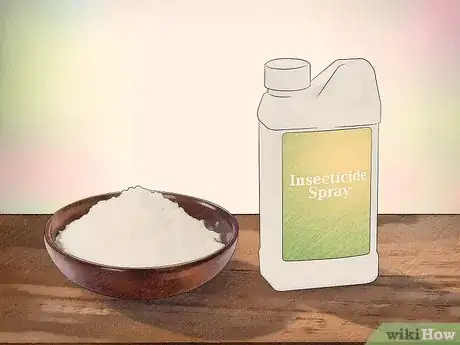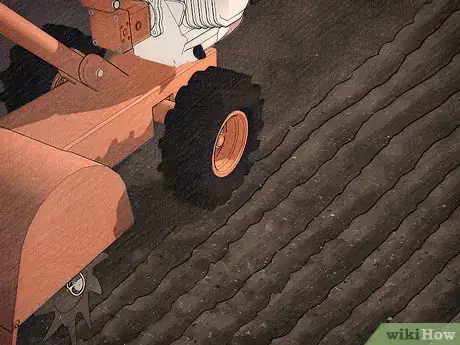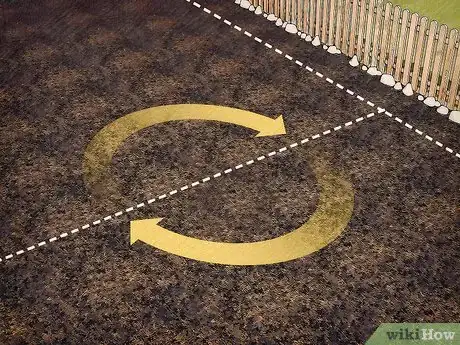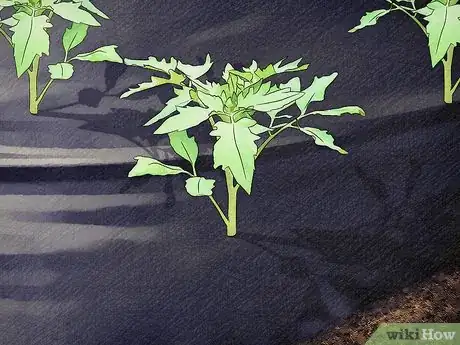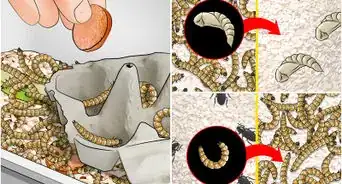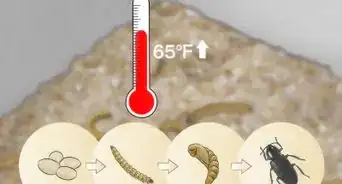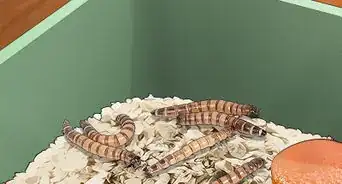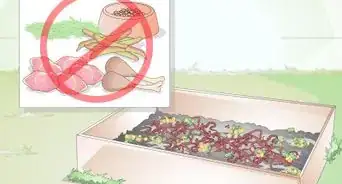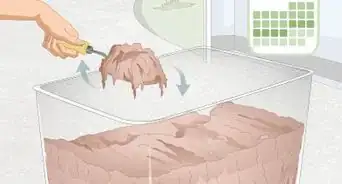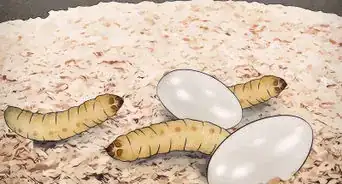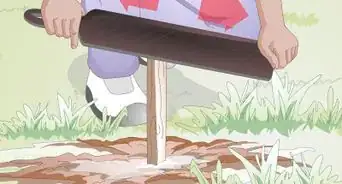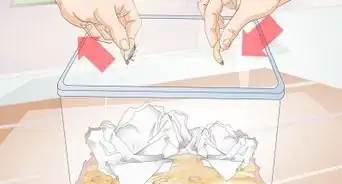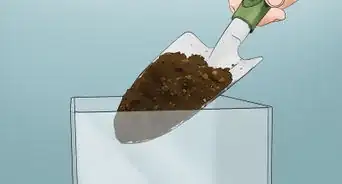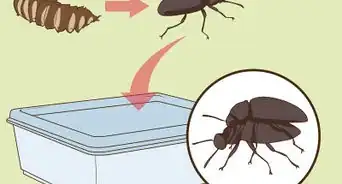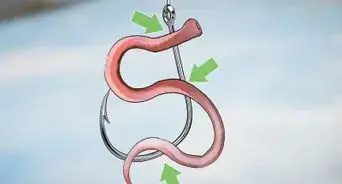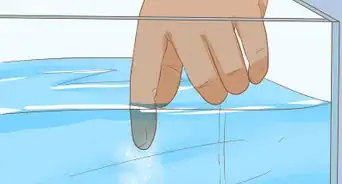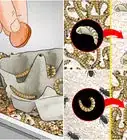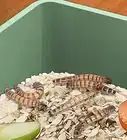This article was co-authored by Artemisia Nursery. Artemisia Nursery is a retail plant nursery in Northeast Los Angeles specializing in California native plants. Artemisia Nursery is a worker-owned small business with plans to become a worker-owned cooperative. In addition to California native plants, Artemisia Nursery offers a selection of succulents, heirloom veggie and herb starts, house plants, pottery, and gardening tools and supplies. Drawing on the knowledge of the founders, Artemisia Nursery also offers consultations, designs, and installations.
There are 9 references cited in this article, which can be found at the bottom of the page.
wikiHow marks an article as reader-approved once it receives enough positive feedback. In this case, 98% of readers who voted found the article helpful, earning it our reader-approved status.
This article has been viewed 136,367 times.
The tomato worm, or tomato hornworm, can quickly destroy a tomato crop. Found in most regions of the United States, these caterpillars blend in easily with the foliage and feed non-stop. Eggplants, peppers, and potatoes are also susceptible to the appetite of the tomato worm. But have no fear! By learning to identify, eliminate, and prevent these pests, you can keep your tomato crop safe.
Steps
Using a Natural Remedy
-
1Remove them by hand. While time consuming, removing tomato worms by hand can be very effective. It's also the most environmentally-friendly way to get rid of them.[1]
- Adult tomato worms have a horn-like protrusion on their rear. But do not worry, they are not dangerous and will not sting you. Wearing gloves is a good way to help you feel more comfortable picking them up.
- Dropping the worms in bucket of soapy water can help if you are squeamish about crushing them.
- If you are having trouble seeing them, spraying the leaves with water will make them move.[2]
-
2Spray plants with a homemade mixture. Spraying plants liberally with a mixture of 2 cups water, 1 teaspoon each of cayenne pepper and liquid dish soap will deter the caterpillars from feeding. Adding garlic to the mixture can also help prevent moths from initially laying the eggs. Make sure to thoroughly cover both sides of the leaves and the stems.[3]Advertisement
-
3Introduce a predator insect. By introducing a predator insect you can help control your tomato worm problem and benefit your garden at the same time. There are many of these insects that can help.
- Wasps feed on tomato worms and attach their larvae to them. Once attached, the wasp larvae will feed on the tomato worm until it is dead.
- If you see tomato worms with wasp larvae attached (they will look like tiny grains of rice on the back of the caterpillars) remove them from your garden but do not kill them. This way any damage will end but the wasps can still do their jobs and it will help populate your garden with wasps.
- Ladybugs and lacewings are also beneficial insects if you would prefer not to have many wasps around. These insects eat tomato worms, rather than lay their eggs on them as the wasps do.
- Birds are also an option as they can easily spot the worms and eat them. Placing a bird feeder or bird bath near your garden can help attract birds.[4]
-
4Interplant your tomatoes with dill, basil, or marigolds. These plants and other can help keep away many pests including tomato worms and can be beneficial to your plants.
- Tomato worms enjoy these plants more than tomatoes. As they eat their way through the decoy plants, your tomatoes will be safe and you can eliminate the pests as you see fit.
- These plants also tend to attract beneficial and predatory insects that can repel tomato worms.
- There are added benefits to the presence of some of these plants, such as basil which can help enhance the flavor of your tomatoes as they grow.
Using an Insecticide
-
1Decide on the type of insecticide. There are many options of insecticide to pick from and the choices may seem daunting. Be careful in choosing as some may be harmful to beneficial insects.
- Botanical Bt (Bacillus Thuringiensis) is an organic insecticide that acts as a stomach poison and will not harm other plants or animals. Bt also kills cabbage worms, cabbage loopers, cutworms, and other harmful caterpillars.
- Pyrethrins are derived from the Chrysanthemum flower and are used to control fleas, flies, moths, ants and other pests. These organic insecticides are safer for human consumption than other inorganic compounds.[5]
- Spinosad is a natural substance made by soil bacterium. This insecticide is effective on tomato worms and pests such as spiders mites, mosquitoes, and ants.[6]
- Food-grade diatomaceous earth is a biosafe mineral that's harvested from the ocean. It will kill insects and worms if they come into contact with the fine dust.[7]
-
2Decide on a spray or dust. There is no right or wrong choice when picking a dust or spray. The size of your infestation and garden are the biggest factors in choosing.
- Dusts tend to last longer, provide a better coat, and do not require mixing before application. However, they can be harder to apply and drift to other plants in the wind.
- Sprays are mostly concentrated or in powder form and require you to mix them with water before use. Once this is done they can be spread quickly over a large area.[8]
-
3Apply the insecticide to your plants. Each insecticide is different and may require a specific way to apply it.
- The most important thing to remember is to read the package of the insecticide you choose for any warnings and environmental factors when applying.
- With any chemical-based product, test a small section of the plant for sensitivity and wait 24 hours before covering the full area.[9]
Preventing the Worms
-
1Till the soil. Tilling the soil at the beginning and end of each planting season can help to destroy larvae. Studies show that tilling can cause up to a 90% mortality. Larvae lives in the soil below the plant so a root-tiller is the best choice for this. It helps to break up the larvae and reaches deeper below the surface to help get most of them.[10]
-
2Rotate your crops each planting season. Tomato worm larvae spend the non-growing season below the surface. When the next season begins they come back to your tomatoes. Moving the tomato crop to a different location can help prevent damage. Tomatoes also feed heavily on the soil, so rotating them with a light feeding plant can help the soil.
-
3Cover the ground. Using a black plastic mulch around your plants will prevent the tomato worms from coming out of the soil. There are regional drawbacks to covering the ground, so make sure whether it is appropriate for your climate.
Expert Q&A
Did you know you can get expert answers for this article?
Unlock expert answers by supporting wikiHow
-
QuestionHow do you get rid of tomato worms?
 Artemisia NurseryArtemisia Nursery is a retail plant nursery in Northeast Los Angeles specializing in California native plants. Artemisia Nursery is a worker-owned small business with plans to become a worker-owned cooperative. In addition to California native plants, Artemisia Nursery offers a selection of succulents, heirloom veggie and herb starts, house plants, pottery, and gardening tools and supplies. Drawing on the knowledge of the founders, Artemisia Nursery also offers consultations, designs, and installations.
Artemisia NurseryArtemisia Nursery is a retail plant nursery in Northeast Los Angeles specializing in California native plants. Artemisia Nursery is a worker-owned small business with plans to become a worker-owned cooperative. In addition to California native plants, Artemisia Nursery offers a selection of succulents, heirloom veggie and herb starts, house plants, pottery, and gardening tools and supplies. Drawing on the knowledge of the founders, Artemisia Nursery also offers consultations, designs, and installations.
Plant Nursery & Garden Shop
-
QuestionWill baby powder keep tomato worms off my plants?
 Baylie VoylesCommunity AnswerYes! The baby powder will make the worms stay away. My aunt did this for her plants and garden and it worked amazing.
Baylie VoylesCommunity AnswerYes! The baby powder will make the worms stay away. My aunt did this for her plants and garden and it worked amazing. -
QuestionDo I sprinkle baby powder over my tomato plants to stop predators, or is there a method to it?
 Community AnswerSprinkle baby powder on the leaves and stems of the plants and reapply when necessary. There is no particular method, but ensure to coat the top and bottom of the leaves generously.
Community AnswerSprinkle baby powder on the leaves and stems of the plants and reapply when necessary. There is no particular method, but ensure to coat the top and bottom of the leaves generously.
References
- ↑ Artemisia Nursery. Plant Nursery & Garden Shop. Expert Interview. 7 August 2020.
- ↑ https://www.almanac.com/pest/tomato-hornworms
- ↑ https://plantcaretoday.com/tomato-hornworm.html
- ↑ https://www.veggiegardener.com/threads/tips-for-getting-rid-of-tomato-hornworms.1705/
- ↑ https://www.epicgardening.com/tomato-hornworm/
- ↑ http://npic.orst.edu/factsheets/spinosadgen.html
- ↑ Artemisia Nursery. Plant Nursery & Garden Shop. Expert Interview. 7 August 2020.
- ↑ http://www.pestproducts.com/dusting.htm
- ↑ https://www.extension.umn.edu/garden/insects/find/tomato-hornworms-in-home-gardens/
About This Article
Tomato worms can quickly take a toll on your vegetable garden, but fortunately they’re easy to control using a few different strategies. If you have a small garden, handpick the tomato worms off of your plants and drop them into a bucket of soapy water to kill them. Check both sides of the leaves on your plants and along the ground to make sure you’re catching them all. You can also spray your plants with a hose to knock off and drown small tomato worms. Introducing wasps, ladybugs, or green lacewings to your garden can also help control the tomato worm population. These insects feed on tomato worms and their eggs. Applying Bacillus thuringiensis, or Bt, to your infested plants will kill tomato worms as well. Bt is an organic pesticide that’s safe for plants and other animals but kills larval insects when it’s ingested. You can also spray your plants with an insecticidal soap to kill any tomato worms on them. To prevent a future infestation, thoroughly till your garden soil at the beginning and end of the growing season to kill any larvae. For more tips, including how to prevent tomato worms when planting new crops, read on!
